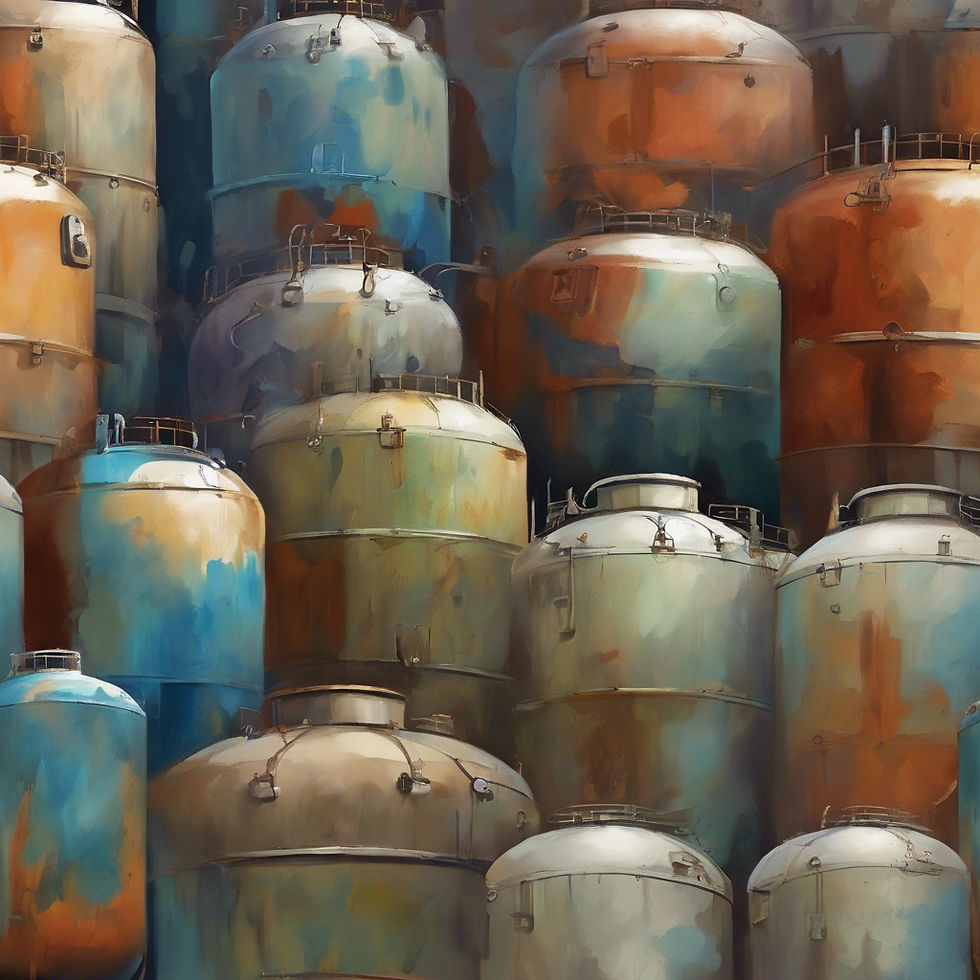Striking the Perfect Balance: Optimizing TEG Equipment through Glycol-Water Ratio
- morgancostigan
- Sep 9, 2023
- 3 min read
In the world of natural gas processing, achieving the right balance is everything. This holds true when it comes to designing Triethylene Glycol (TEG) Dehydration Units, where the glycol-water ratio plays a pivotal role. Standard usage ranges between 1.8- 4.1 gallons of glycol per lb of water Finding the sweet spot between minimizing glycol usage and maximizing efficiency can significantly impact the design and performance of your TEG equipment. In this blog post, we'll explore the art of balancing glycol-water ratios to optimize your TEG equipment design.
The Tug of War: Shorter Tower vs. Smaller Regenerator
In TEG Dehydration Units, the glycol-water ratio is a crucial parameter that directly affects two key components of the system: the regeneration unit and the contactor tower.
Smaller Regeneration Unit: A lower glycol-to-water vapor ratio means less water to be removed during the regeneration process. This results in a smaller and more cost-effective regeneration unit. It's an attractive option, especially when space and cost considerations are paramount.
Shorter Contactor Tower: Conversely, increasing the glycol-to-water ratio allows for a shorter contactor tower. This reduces the physical size of the tower and can be advantageous in situations where vertical space is limited.
However, there's a trade-off. While minimizing glycol usage and the size of the regen unit is desirable, it often results in a more significant operating expense due to higher glycol losses and increased energy consumption during the regeneration process. Conversely, a shorter contactor tower may compromise the efficiency of the dehydration process.
Finding the Optimal Balance
Balancing the glycol-water ratio involves striking a compromise between minimizing equipment size and maximizing operational efficiency. Here's how to approach this challenge:
Understand Your Process: Begin by thoroughly understanding the characteristics of the gas stream you're dealing with. Factors like gas composition, temperature, pressure, and moisture content will influence your glycol-water ratio choice. Higher temperature gas means a very wet gas stream and the need to increase your glycol/water ratio to ensure proper dehydration.
Assess Space and Cost Constraints: Consider the physical space available for equipment installation and the budget constraints. Smaller regen units and shorter contactor towers may be preferred if space and cost are limited. Desiring an 8-tray tower, the design has 2 theoretical stages of dehydration available and one needs to increase your glycol/water ratio until you achieve that.
Evaluate Operating Costs: Analyze the operational expenses associated with different glycol-water ratios. This includes glycol losses, energy consumption during regeneration, pump size and maintenance costs.
Model the System: Utilize process modeling software to simulate different glycol-water ratios and their impact on system performance. This can help you identify the optimal balance. The simplest and least expensive option for this is www.productionequipmentdesign.com .
Consult with Experts: Seek the guidance of experienced engineers and TEG equipment specialists who can provide valuable insights and recommendations based on their industry knowledge.
Monitor and Adjust: After the TEG unit is operational, regularly monitor its performance and adjust the glycol-water ratio as needed to optimize efficiency.
Conclusion
Balancing the glycol-water ratio in the design of your TEG Dehydration Unit is a delicate dance between equipment size, operational efficiency, and cost considerations. There's no one-size-fits-all solution, as each project is unique. By thoroughly analyzing your specific requirements, consulting with experts, and utilizing advanced modeling tools, you can fine-tune your glycol-water ratio to strike the perfect balance, ensuring optimal performance and cost-effectiveness in your TEG equipment design.




Comments